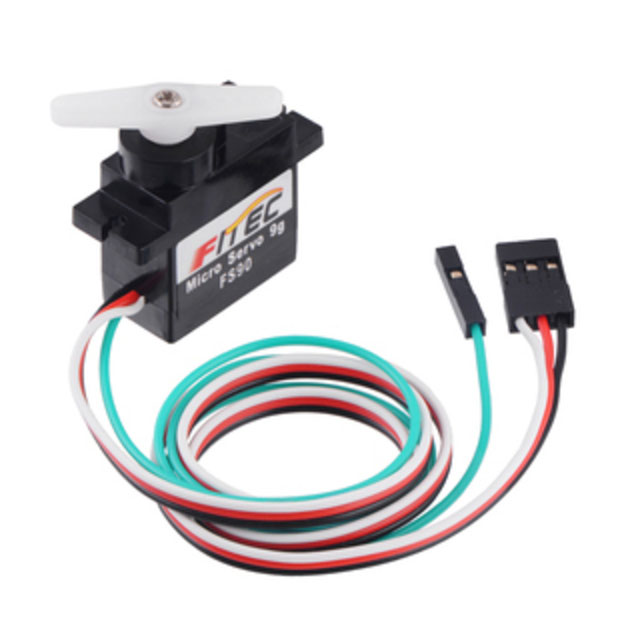FEETECH Micro Servo Series, Expansion Boards, Daughter Cards
Results:
1
Manufacturer
Series
Torque - Rated (oz-in / mNm)
Operating Temperature
Diameter - Shaft
Termination Style
Encoder Type
Voltage - Rated
Size / Dimension
Mounting Hole Spacing
RPM
Length - Shaft and Bearing
Function
Type
Power - Rated
Motor Type
Torque - Max Momentary (oz-in / mNm)
Features
Gear Reduction Ratio
Results remaining:1
Applied Filters:
FEETECH Micro Servo
About Expansion Boards, Daughter Cards
Evaluation and expansion boards, along with daughter cards, serve as essential tools for enhancing the functionality of microcontroller platforms. These boards are specifically engineered to seamlessly stack onto existing pin headers or preconfigured attachment ports, allowing for convenient integration of additional features and capabilities into the microcontroller-based systems. These expansion boards and daughter cards come in a variety of types, each offering specific functions to cater to diverse application requirements. Common categories of functionality include: Amplifiers: These boards provide additional amplification capabilities for signal processing and conditioning, enabling the microcontroller platform to interface with various sensors and actuators. Atomizers: Designed for applications requiring atomization or vaporization, these boards offer support for atomizer control and management, often used in electronic cigarette devices and other atomization-related applications. Audio: Boards dedicated to audio functionality, including audio input/output, sound processing, and audio signal manipulation, expanding the microcontroller's capabilities for audio-related applications. Clock Timing: These boards provide precise clock timing and synchronization features, ensuring accurate timing and clock signals for synchronous digital system operations. Interface Connectivity: Offering additional interfaces such as USB, Ethernet, CAN bus, and other communication protocols, these boards enable expanded connectivity options for the microcontroller platform. Data Acquisition/Logging: Designed for data acquisition and logging applications, these boards facilitate the capture, storage, and retrieval of analog or digital data from external sources. Display: These boards support various display technologies, including LCD, OLED, and LED displays, enhancing the microcontroller platform's ability to present visual information. Human Interface: Boards focused on human-machine interface (HMI) functionality, incorporating components such as touchscreens, keypads, and other input/output devices for user interaction. Memory: Providing additional non-volatile memory storage options, these boards expand the data storage capabilities of the microcontroller platform. Motor Drivers: Dedicated to motor control and driving applications, these boards enable the microcontroller to interface with and control different types of motors, including DC motors, stepper motors, and servo motors. Optoelectronics: Supporting various optoelectronic components such as LEDs, photodetectors, and optical sensors, these boards enhance the microcontroller's optical sensing and light emission capabilities. Power Management: Focused on power supply and management functions, these boards provide voltage regulation, power conversion, and energy-efficient power management solutions for the microcontroller platform. Prototyping: Offering prototyping and expansion capabilities, these boards provide a platform for rapid development and testing of new electronic circuits and functionalities. Relay and Transistors: Boards designed for switching and control applications, incorporating relays, transistors, and other switching components for interfacing with external electrical devices. RF and Sensor Arrays: Supporting radio frequency (RF) communication and sensor arrays, these boards enable wireless connectivity and sensor integration with the microcontroller platform. By leveraging these evaluation and expansion boards, engineers and developers can enhance the functionality and versatility of microcontroller platforms across a wide range of applications. Whether adding communication interfaces, sensor inputs, display capabilities, or specialized control functions, these boards play a crucial role in expanding the potential of microcontroller-based systems, empowering users to develop innovative and feature-rich embedded solutions.

